USF Successfully Hosts Virtual Elementary CyberCamp for 29 Students
Article originally published on the Cyber Florida website.
The cybersecurity industry is an in-demand, high-paying field that is rapidly evolving but currently faces a major talent shortfall. With over 500,000 unfilled cybersecurity positions in the United States, it is important to find innovative ways of increasing the workforce, enhancing the quality of the workforce, and building a cyber-focused culture across the nation.
One of the best ways to begin doing this is by introducing basic technology and cybersecurity concepts to K-12 students as well as providing them with access to the industry and the possibilities of a career within the field. In support of this initiative, the University of South Florida hosted the first-ever USF Elementary CyberCamp, sponsored in part by Cyber Florida, to introduce elementary students grades 3-5 to cybersecurity. The camp curriculum was created by the the Florida Center for Instructional Technology (FCIT) and the USF College of Education and was designed as an engaging, educational, and fun virtual experience for the campers!
Twenty-nine elementary students from fourteen Florida counties and one Georgia county attended the week-long virtual camp to engage in interactive activities that introduced basic cybersecurity concepts, learn about the ethics of hacking, and develop skills to increase their self-confidence when entering STEM pathways in middle and high school.
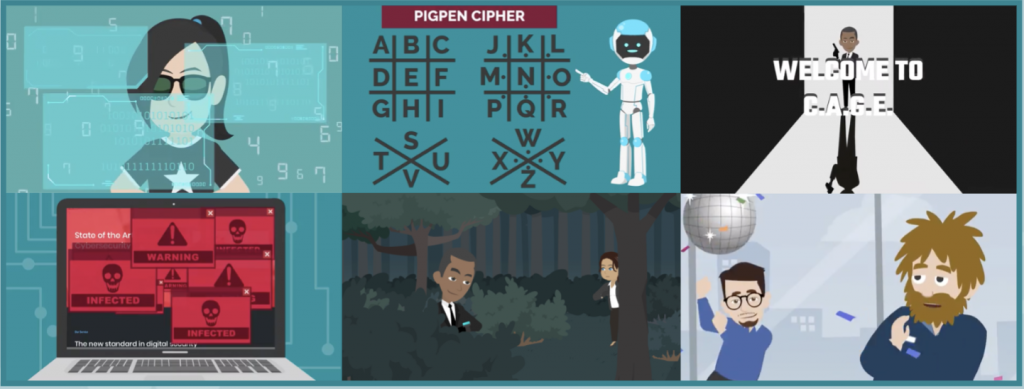
Prior to the start of the week-long camp, campers were visited by a “cybersecurity agent” who personally invited them to join as a recruit for C.A.G.E., a fictional cybersecurity organization designed for the purpose of the camp. The agents delivered packages to each of the new recruits containing a letter of invitation and materials that would be needed for their upcoming mission as a C.A.G.E. agent.


The virtual USF Elementary CyberCamp was comprised of 70 animated videos that featured more than 30 individual characters, each with personalized identities, roles, and story lines. Some of the characters within the narrative were voiced by actual cybersecurity professionals, which helped build a sense of community and allowed industry pros to get involved with the process of introducing young students to the field.
Utilizing Canvas and Microsoft Teams, the asynchronous-style camp encouraged students to work at their own pace and provided one-on-one sessions with counselors if additional assistance was needed. Similar to an escape room or a choose-your-own-adventure book, the camp allowed students the freedom to choose which activities they wanted to do and follow the story accordingly.
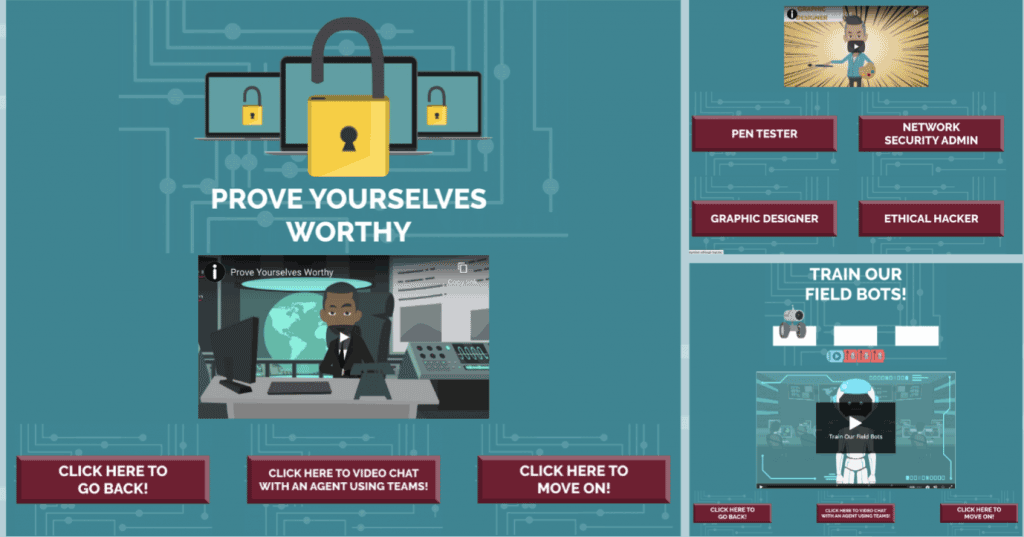
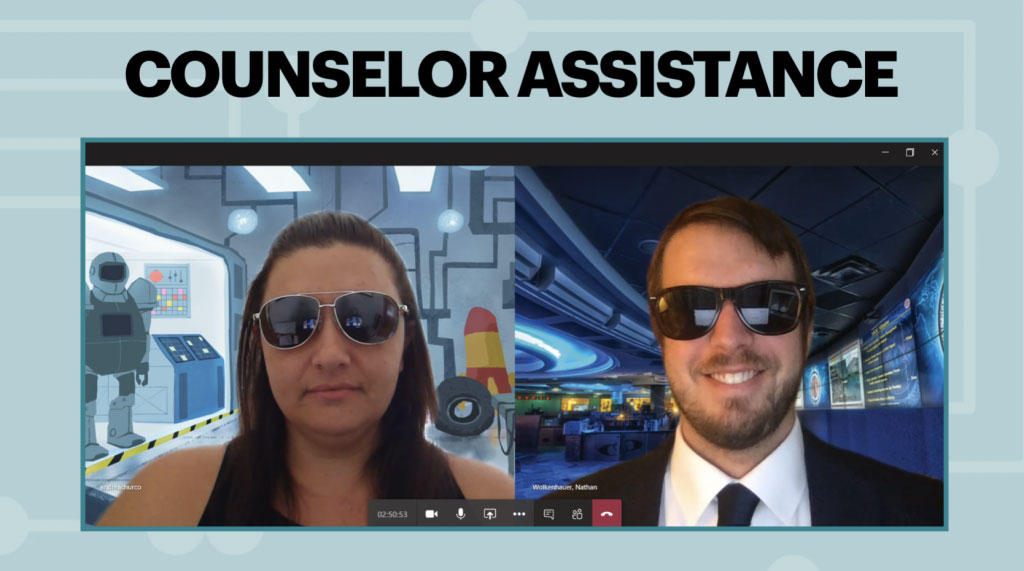
On their first day as new recruits at the C.A.G.E. organization, campers were introduced to the four main characters of the narrative who would lead them throughout their time as trainees. As the campers toured the C.A.G.E. headquarters and “met” the virtual agents at the organization, disaster struck when Agent X, one of the top agents, discovered a massive data breach on their organization. The breach was carried out by an evil adversary, Hexacorp, with the assistance of a mole hidden somewhere within the C.A.G.E. organization. From that point, campers were tasked with the responsibility of uncovering the mole, building up C.A.G.E.’s headquarter defenses, and shutting down Hexacorp once and for all.
As campers began their week-long mission to uncover the mole and shut down the attackers, they engaged in over 50 custom-made interactive activities that were designed to develop basic cybersecurity skills in areas such as social engineering, code-blocking, file-cracking, and more.
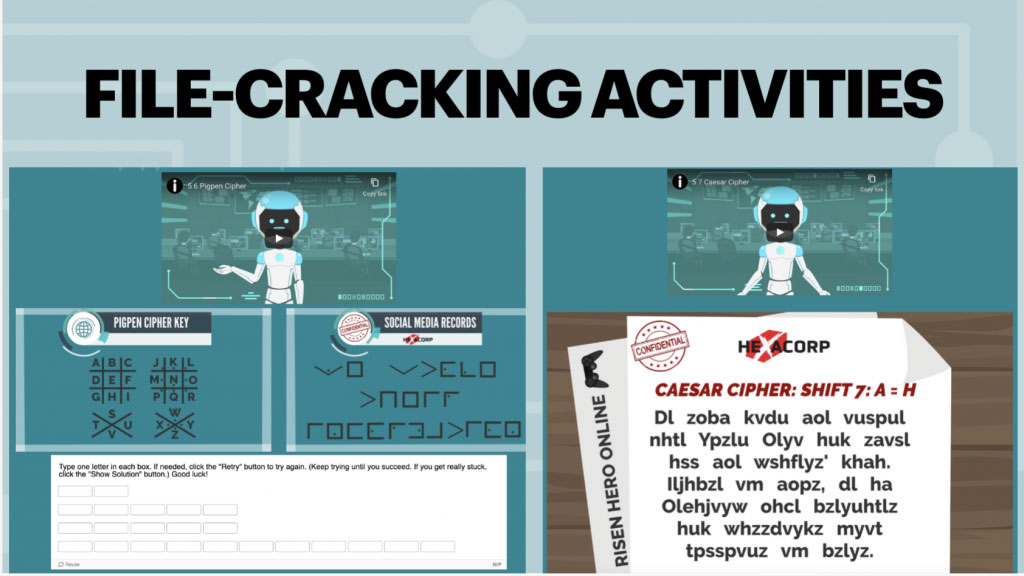
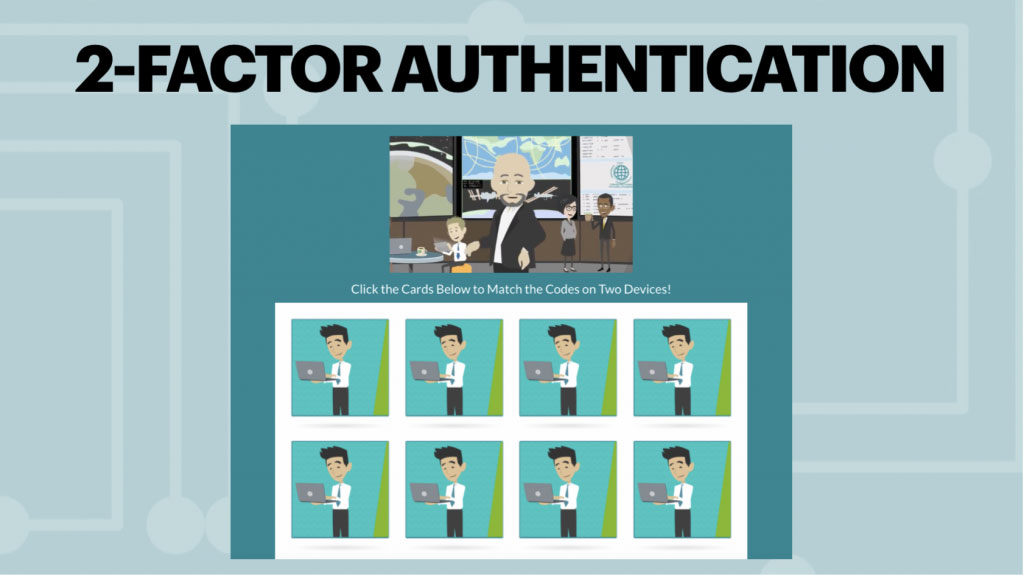
One of the online lessons introduced campers to the idea of social engineering and how it could be used to build C.A.G.E.’s defenses. In order to successfully compromise Hexacorp and uncover their stolen files, campers would choose a response that would allow them to successfully find answers from a Hexacorp employee without revealing their identities.

Although the USF Elementary CyberCamp was entirely virtual, the camp was carefully crafted to ensure that the kids would be consistently engaged both mentally and physically. Throughout the course of the week-long camp, campers switched between online and kinesthetic lessons that allowed them to step away from the screen and utilize their skills as an agent in their own homes.
Campers used the materials that were sent to them in their “recruitment package” to complete hands-on activities, such as designing a protective laserbeam course and building a model of the C.A.G.E. headquarters that was equipped with defense against attackers.

These kinesthetic lessons creatively introduced students to basic technology concepts, such as how to build defenses and remain covert to avoid detection from outsiders.
One of the offline activities instructed campers to survey the various locks that were around their house and inspect the differences between each one. This activity introduced the basic concept of building defenses as they considered why certain locks, such as the lock on the front door, had more vigorous security than the locks on windows and doors inside the house. Once the campers had basic knowledge about various levels of defense in the real-world, they designed the C.A.G.E. headquarters using the materials they received, complete with defense mechanisms like security cameras and guards that could help protect the headquarters from attackers.

The USF Elementary CyberCamp was an educational and engaging experience that introduced young students to the possibilities of entering the cyber field one day. As technology continues to evolve and remain a crucial aspect of modern life, it’s necessary to secure our defenses, as the campers did in their mission with C.A.G.E., and build a strong cybersecurity culture across the nation beginning at a young age.
In a survey completed at the end of the camp, 100% of parents said that their child was fully engaged in the camp curriculum using the asynchronous model and 72% of campers said that they could see themselves working in the field of cybersecurity!
One of the parents said, “I can not say enough positive things about the ‘agents’ who worked with my son. Keiran absolutely loved the camp. He has made multiple escape rooms and laser maze rooms since camp ended. He taught his parents and grandparents multiple ways to write and figure out codes and is hopeful to come up with a ‘code’ to do with his friends if/when in-person learning is safe again.”
FCIT Newsletter
Each month FCIT publishes a newsletter with short articles on teaching and learning with technology, using digital content in the classroom, and technology integration. Subscribe today! The subscription form will open in a new window. When you have subscribed, you can close the new window to return to this page.
